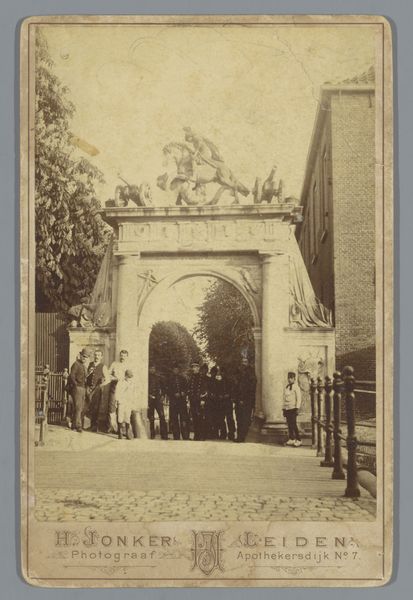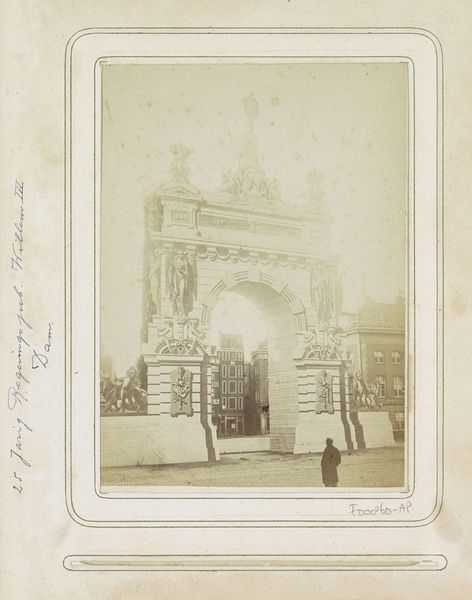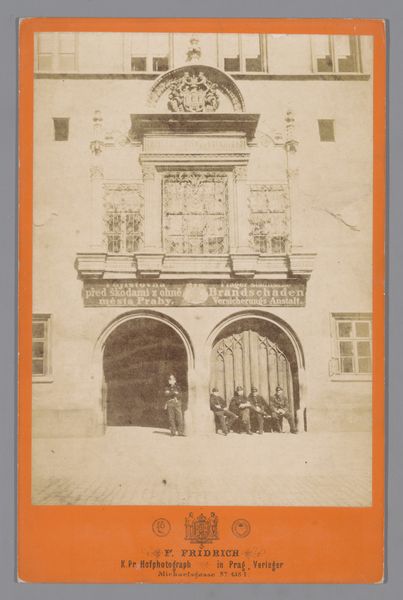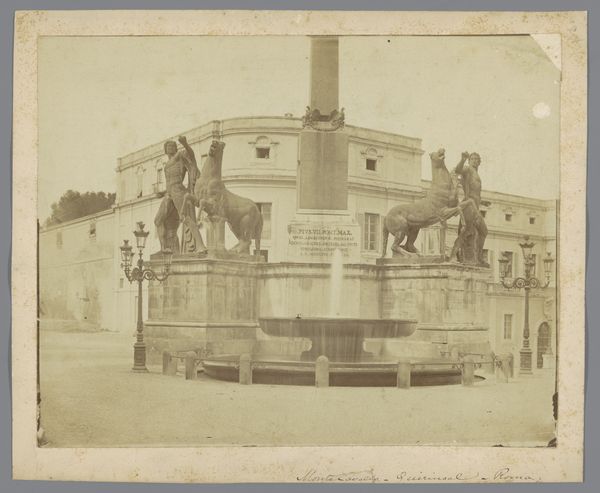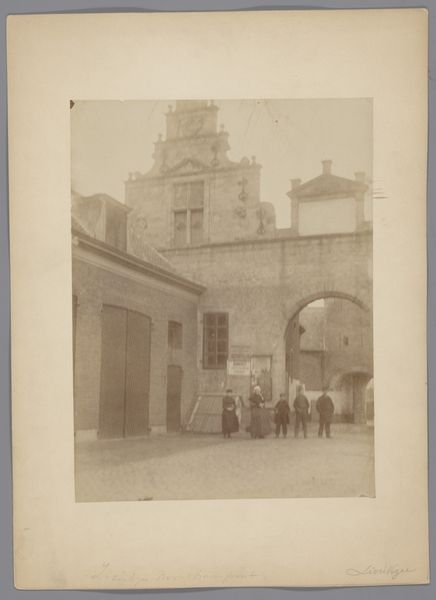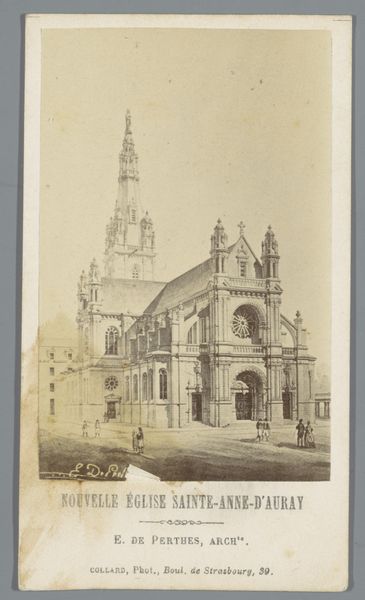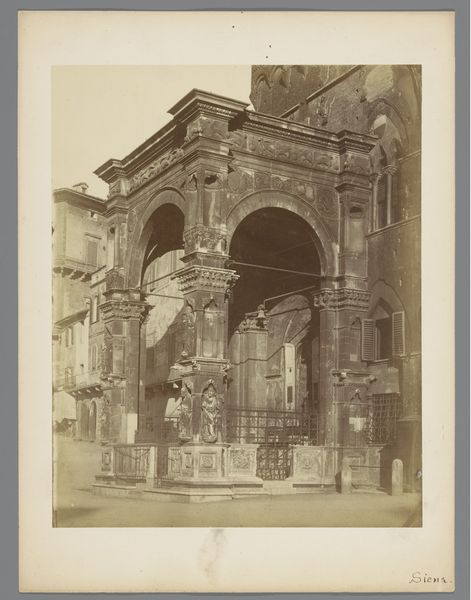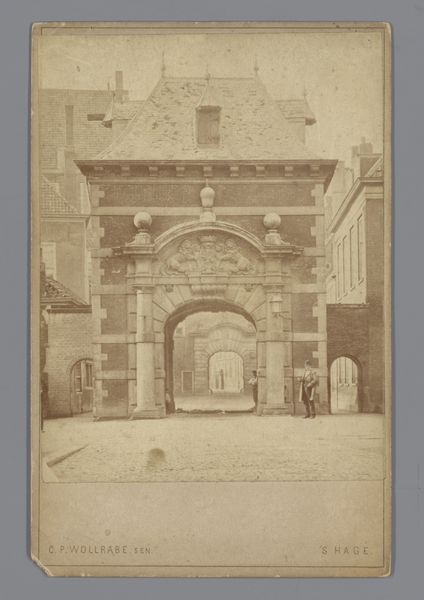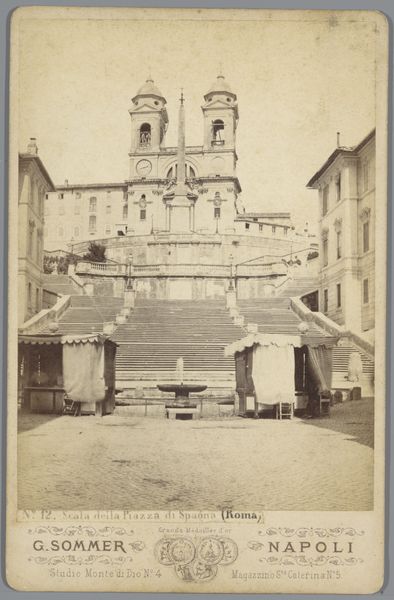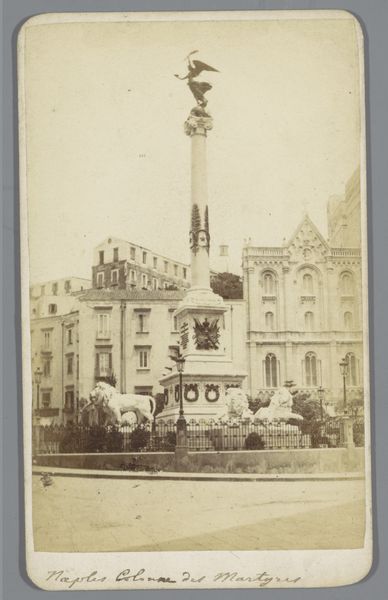
Gezicht op de Dam in Amsterdam, met op de achtergrond de Beurs van Zocher 1868 - 1900
0:00
0:00
print, plein-air, photography
#
dutch-golden-age
# print
#
plein-air
#
photography
#
cityscape
#
realism
Dimensions: height 165 mm, width 107 mm
Copyright: Rijks Museum: Open Domain
Editor: This photograph, "Gezicht op de Dam in Amsterdam, met op de achtergrond de Beurs van Zocher" by Hermanus Jodocus Weesing, likely taken between 1868 and 1900, really captures a moment in time. I'm struck by the imposing architecture and the blurred figures hinting at bustling city life. What draws your eye in this image? Curator: The interplay of light and shadow, notably the sharp delineation cast by the arch against the ground, commands immediate attention. Consider how the photographer has framed the scene: the arch bisects the composition, creating a dynamic tension between the foreground activity and the background building, the Beurs van Zocher. Are you sensing how Weesing controls the space using depth? Editor: I do see how the arch acts as a focal point. It’s also interesting how the figures are blurred; was that intentional or a limitation of the technology at the time? Curator: That’s a valuable question to probe, as it pushes beyond immediate observation. It underscores a critical aspect of early photography – the lengthy exposure times that render movement as blur. However, the formalist analysis pushes to look deeper than mere technical limitations. Instead, what do you make of how that blur _functions_ in the context of the picture plane? Does it perhaps enhance a sense of immediacy, the ‘now’ being captured, in opposition to the structural stability of the architecture behind it? Editor: That's a perspective I hadn’t considered. I guess it’s about what the artist _does_ with that limitation. So, would you say that the real subject here is how forms interact within the photographic frame? Curator: Precisely! It’s a photographic rendering, not a mimicry. Note, for instance, the placement of architectural elements relative to human presence, or how textural variations are converted into tonal gradients within the monochromatic image. The photograph’s true achievement resides not in what is shown but how the components are arranged. Editor: That makes me look at the photograph in a totally new way. Focusing on the formal elements opens it up a lot more. Curator: Yes, it provides an appreciation for the carefully structured visual arrangement, irrespective of historical or social meaning. And, understanding that shift, opens up our knowledge beyond this single photo.
Comments
No comments
Be the first to comment and join the conversation on the ultimate creative platform.
